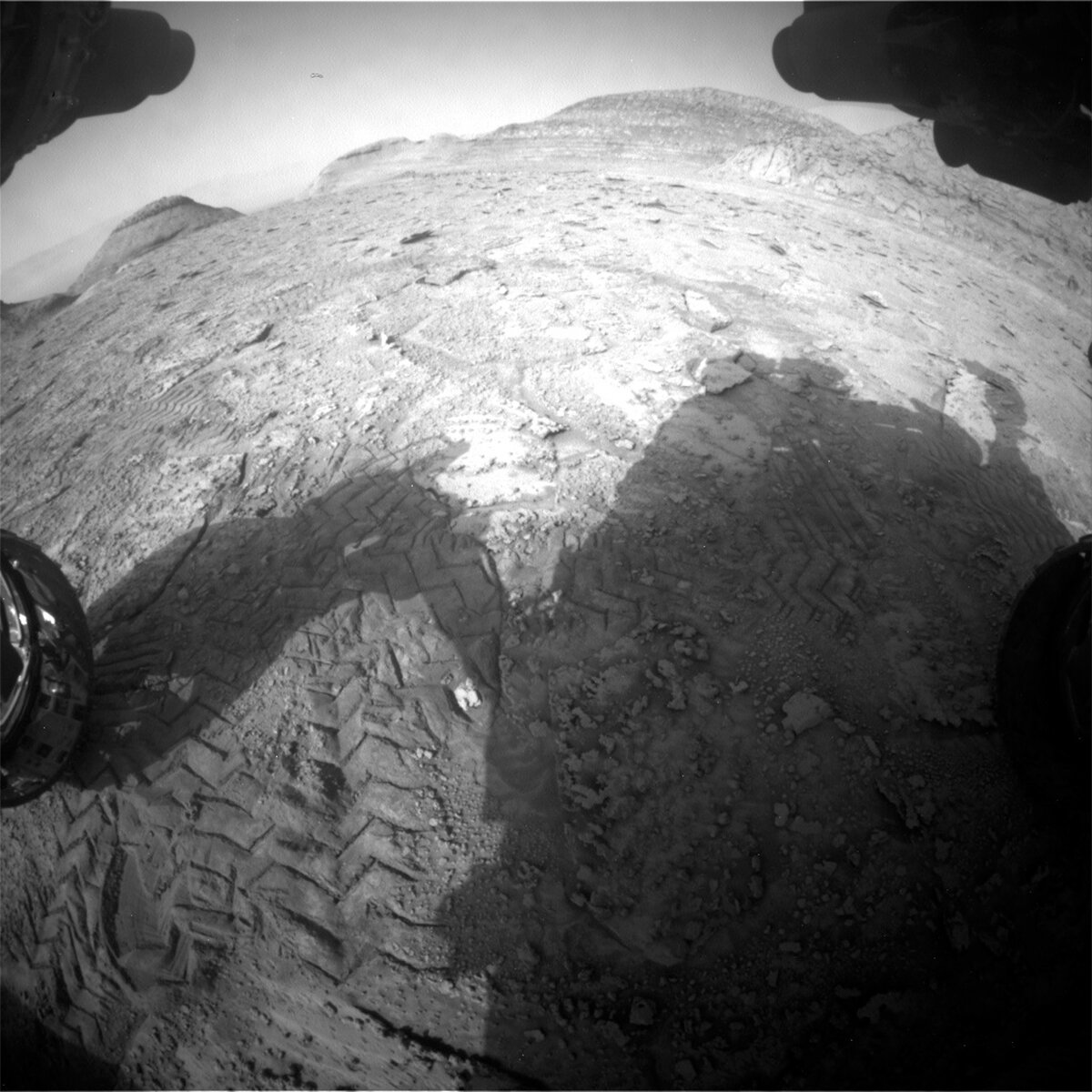2 min read

In Monday's two-sol plan we completed a short drive to another drill location as we continued our attempt to acquire a sample of the Marker Band for potential analysis by SAM and CheMin. With the post-drive images from Monday's plan received, the team focused early discussions on where in the workspace would be a suitable drill area, if any. Of the two flattish rock faces we were interested in and considering, only one proved to be viable. With that, our decision of where to drill in this workspace was made, and we commenced planning "drill sol 1," focusing our suite of instruments on the drill target "Dinira." In the included image, Dinira is approximately in the center of the raindrop-shaped slab, the edge of which is slightly covered by the shadow of Curiosity's left-front wheel's actuator.
In preparation for drilling Dinira, Mastcam images of our planned drill target were acquired after ChemCam conducted analyses with its laser. We then acquired MAHLI images before and after brushing Dinira, as well as after conducting a preload test to assess the stability of the rock. APXS analyses on Dinira, one at the center of the brushed spot and one slightly offset, rounded out our drill target activities on the first sol. The second sol science block was populated with additional ChemCam and Mastcam activities, including a Mastcam image on Dinira to complement the earlier pre-DRT images. Curiosity also acquired Navcam suprahorizon and dust devil movies before snapping twilight images and a picture of Phobos. The rest of the second sol focused on handing over to the weekend plan with as much power as possible, setting the rover up well for what will undoubtedly be a busy and exciting three sols.
Written by Scott VanBommel, Planetary Scientist at Washington University







